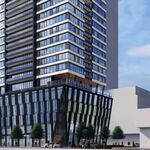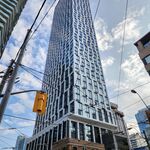Wellington's the best alignment for the central core. However the further out one goes, the more relevant a Queen St Subway becomes to the discussion. This is why I strongly believe that the DRL should run along both corridors via Liberty Village and the West Don Lands:
I hope this map helps to clarify where I was coming from with my suggestions earlier, Jupiter.

This is the downtown core, virtually every station along the way would see a higher than average daily walk-in use than all the non-downtown subway stop locations. This is why I don't buy into the argument that a DRL needs less stops than doing the same commute via B-D and YUS to give a bulk of riders incentive to switch. Another matter, costs. Frankly any DRL will cost exorbiant amounts of money, but that's not an excuse to cut corners by buying it much too far away from the denser traditional parts of the city. I think ssiguy's point with a Queen Subway is that pedestrians might find it an easier walking distance south/north to Chinstown and other attractions near Dundas than from alignment anywhere to the south. So the DRL outlined in the map may provide the best of both worlds, a line that completely dismisses the need for the 504 King Car (truncated Roncesvalles-King West and Broadview routes could still exist), and distributes loads of 501 Queen's/503 Kingston's suburban commuters over a number of stops vs dropping evryone off at a singular hub.





